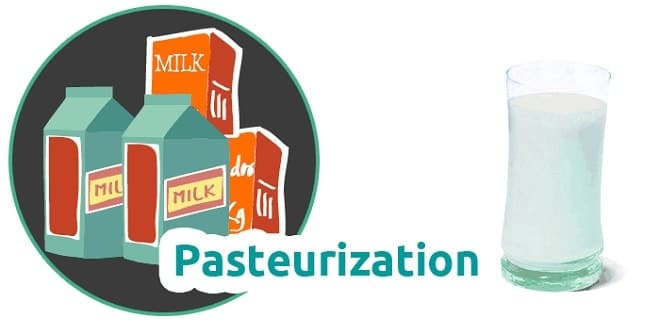Pasteurisation ( Y.Doç.Dr. K. BÜLENT BELİBAĞLI )
•Milk flow diagram- HTST
•ESTABLISHMENT OF THE PASTEURIZATION PROCESS
•The impact of pasteurization is defined by a time/temp. relationship applied to the food product. There are two considerations.
•The first is the necessary time/temp. to achieve the desired result of the process.
• The second is the configuration of the equipment required to achieve the established process.
•Milk pasteurization
•Minimum pasteurization processes are based on the occurrence of several microbial pathogens in milk. These pathogens include Brucella abortis, Myobacterium tuberculosis, and Coxiella burnetti. The impact of these pathogens on human health is recognized in the form of tuberculosis and q fever. The minimum pasteurization process has been established as 63℃ for 30 minutes. This process is based on D63 = 2.5 minutes and a Z of 4.1℃.
•The minimum pasteurization process
•The process of 30 minutes at 63℃ represents a 12-D process in that the population is reduced by 12 times the D-value of 2.5 minutes. an initial population of 100 pathogens would be reduced to a probability of l0-10 by the minimum pasteurization process. On the other hand, it must be recognized that the populations of these pathogens in raw milk are much below l00, resulting in the probability of survival being significantly less.
•Survival Curve for Pathogen in Milk
•The process of 63℃ for 30 minutes is a typical process for batch pasteurization of a liquid food product like milk. Most pasteurization processes for liquid foods are accomplished in continuous HTST processes. To determine the HTST process equivalent to 63℃ for 30 minutes, the concept of lethal rate can be utilized. lethal rate is defined by Eq. as follows:
•By accepting the reference temp. as 63℃ as well as pasteurization temp. of 63℃, the lethal rate is equal to 1. The temp. rise and cooling occur rapidly at time zero and the end of 30 minutes.
•The key factor to recognize at this point is that the minimum requirement for pasteurization when considering the impact on a pathogen is a minimum of 30 minutes at the pasteurization temp.
•The lethal rate curve illustrates that the area of the curve is equal to 30 minutes. This represents the holding time at the desired pasteurization temperature.
•Any additional impact of the thermal process, prior to the time the product reaches pasteurization temperature, and after the 30 minutes of holding at the desired temperature, is additional process that is in excess of the minimum requirement.
•Lethal rate Equation
•Lethal Rate Curve for Batch Pas.
•A temperature of 71.5℃ is quite often utilized in HTST pasteurization of milk. If the lethal rate associated with this higher temperature is determined as illustrated in Eq. (3.2): Where the reference temperature is maintained at 63 and the Z of 4.1 is utilized, the lethal rate is 120.
•The lethal rate of 120 is shown on the vertical axis, the process time on the horizontal axis. For example, if the lethal rate curve represent l5 seconds of process time, the area under the curve represents 1,800 seconds or 30 minutes. The area under curve is 30 minutes. These show that a HTST pasteurization process of 7l.5℃ for l5 seconds is equivalent to a pasteurization process of 63℃ for 30 minutes.
•Lethal Rate Curve for HTST Batch Pas.
•DETERMINATION OF BLANCHING PROCESS
•The typical minimum time/temperature relationships for blanching are based on inactivation of enzymes within the product.
•Due to the variety of fruits and vegetables and the different enzyme systems within these products, blanching processes are quite variable in requirements.
•The impact of thermal energy on enzymes has been expressed in terms of decimal reduction times (D) and thermal resistance constants (Z) for many enzyme systems.
•For example, peroxidase has D121 equal to 3 minutes and Z equal to 37.2℃. Based on these thermal resistant characteristics, a reduction of enzyme activity to .01% would require 12 minutes at 121℃.
• In most cases, blanching is accomplished using water at near its boiling point of l00℃ or at steam-produced atmospheric pressure at l00℃.
•In order to achieve the process described for peroxidase, a time in excess of 12 minutes would be required.
…




